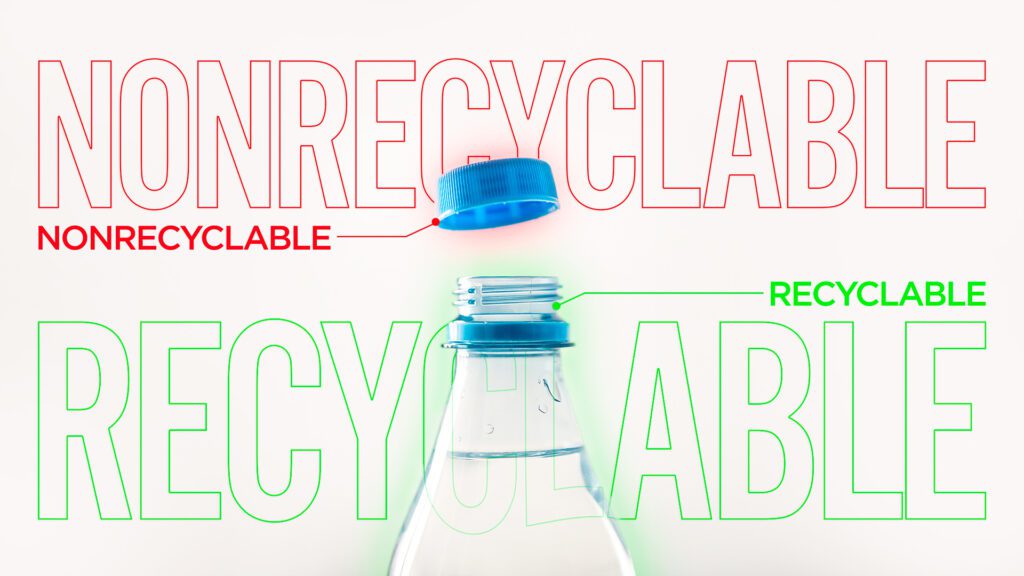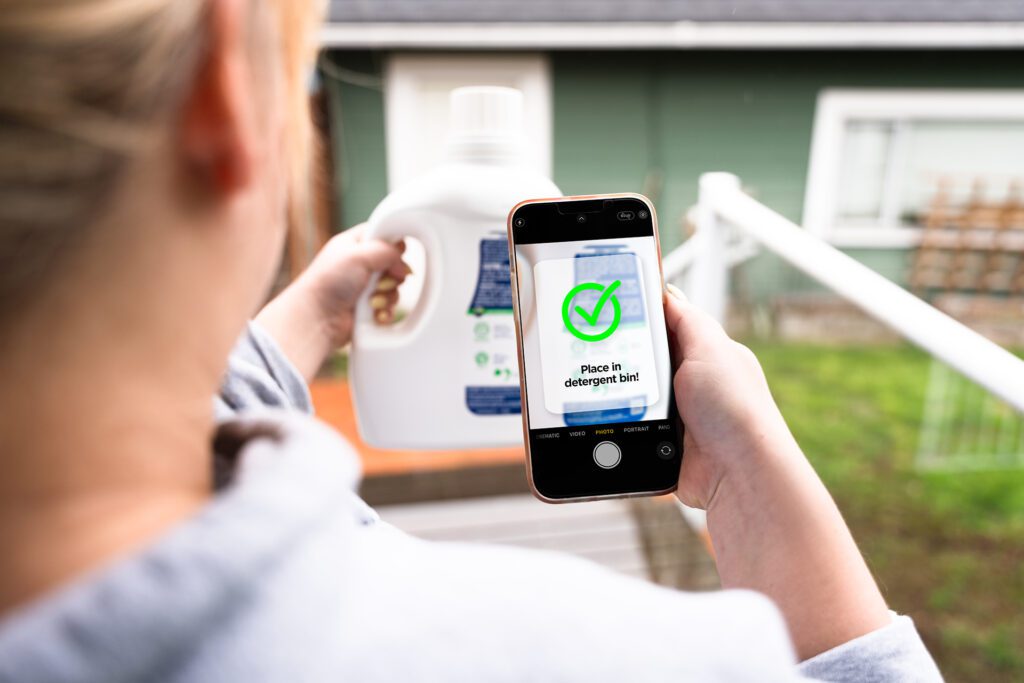In my last post, Trash Talk: The Limitations of AI and Robotics in Waste Management, I dug into the misconceptions of the current state of robotics technology and what robots can’t do better than humans. I also talked about how robots could be used in waste management and materials recovery facilities (MRFs) to make the world a better place. Instead of just focusing on technologies like machine vision that can tell the difference between what is garbage and what can be recycled at MRFs, let’s take one step back and turn our attention to who is discarding waste into those bins in the first place — consumers.
According to the EPA, over 292 million tons of waste was generated in the U.S. in 2018, equating to 4.9 pounds per person per day. That staggering number indicates that consumers can do a better job limiting their waste, starting with better sorting of used products and packaging in their homes. But the issue runs much deeper than putting things into the correct bins. It’s not always easy to identify what should be composted, recycled, or thrown away as trash, and the labels on the bins are not always easy to understand. As a result, many consumers are not aware of how to properly recycle the waste they generate and oftentimes, the simplest thing for them to do is discard the waste into whichever bin is the most convenient.

But, there are alternatives to municipal recycling and waste management. Startup companies like Ridwell are springing up to help get rid of things such as plastics, styrofoam, batteries, and lightbulbs for a small monthly fee. Ridwell in turn takes the materials, separates them, and sells them to various raw materials manufacturers, creating value out of the waste from its customers. This trend of “pay for good” businesses is one example of circularity, but it applies only to a subset of the population that is mainly located in more affluent cities where its population density and wealth can support it.
So what about the people living in rural areas or cities with middle or lower income? Can value be captured out of waste streams to incentivize this practice? Here’s a possible solution.
AI recycling app
Most consumers are familiar with the three waste bins: garbage, recycling, and yard waste. Yard waste is clear for most. Garbage as well. Recycling is the challenge simply because multiple different materials can be placed in the same bin (ie. plastic, cardboard, and glass) but it’s not always clear what cannot be recycled. I believe that if the right technologies are in place, many more people will be willing to take the time to separate their recycling waste to work with current robotic technology in MRFs. This would enable more value to be created from the waste created by residential customers.
For example, if a detergent bottle can be diverted to a facility that can inspect it for damage, clean it, and resell it to the producer to refill, it will produce much more value than sending it to a facility that processes mixed plastics, where the output is a downcycled plastic product.
Logically this makes sense. Success depends partially on separating waste at the source — a.k.a. at home. More value can be extracted from the waste stream if items can be processed by purpose-built facilities capable of reconditioning them for their original purpose.
Here’s a near-term scenario that could be implemented faster than developing fully automated robotic sorting systems (as described in my previous blog post).

In this case, the home user has an app on their smartphone that taps into the camera and AI to identify each item the user puts in the recycle bin. The app sees a laundry detergent bottle and reminds the user to place it in the new bin they received a few months ago, just for detergent bottles. These bottles will be taken separately to a facility for cleansing and resale, while the remaining recycling goes to the local MRF.
The MRF is also using the new AI technology. The AI driving the app at home is integrated with the system in the MRF. This expands the data collection capabilities to see what items customers are recycling, which trains the AI to better identify and put objects in the correct areas. The MRF and the app are both improving because the underlying dataset expands with every plastic bottle.
Possibilities quickly expand with this type of system. Picture a modular MRF with more robots purposely built to handle certain types of waste. The MRF could be set up for specific waste streams based on information coming from the home user. Or, because waste data has been collected over time, the MRF can be set up to handle more paper and cardboard recycling during the holidays. Or, what if the recycling collection vehicles were modified to accept two waste streams, something like paper/cardboard and plastic/aluminum?
Imagine at your home, there were 2 bins (and they fit in the same space as one large bin). With help from the app, you deposited waste into the two bins. After it gets picked up, the trucks then bring loads to the MRF where robotic sorting systems (improving with the AI) could separate these streams more quickly with less human interaction.
Our waste management practices today are unsustainable. We need to do better, and the future of waste collection is going to change significantly in the next decade. It will be built on AI and the advancement of robotic systems will enable replication of more human-like actions. Businesses designed to capture value in our waste streams will be part of the solution.
Here at Synapse, we’ll be working to refine our capabilities and work with clients creating AI-driven sorting systems. However, for this to work, more has to happen. We haven’t touched on the other parts of this problem including consumer packaging requirements, a municipality’s role in waste collection services, and waste collection service provider systems. It’s a big societal problem. One that more citizens need to think about daily.
